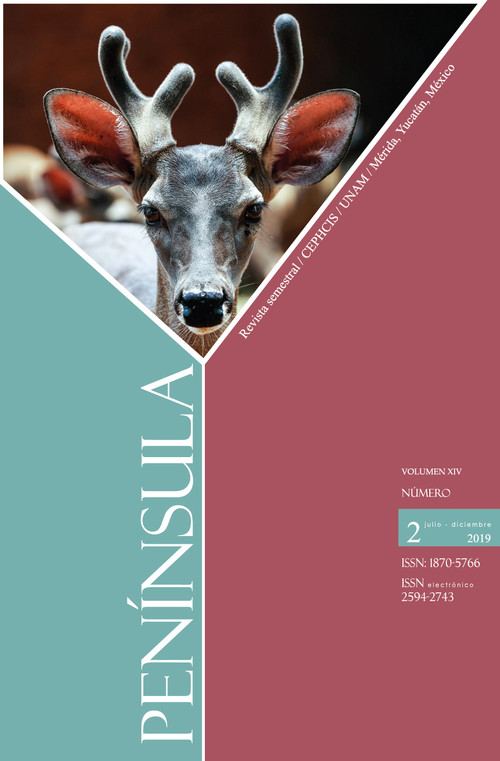Cultural importance of wildlife in rural communities of northern Yucatan, Mexico
Main Article Content
Abstract
The Cultural Importance Index (cii) calculates the value of the role a species plays within a culture, by its value as a useful resource or other interest. The objective of this work was to evaluate the Cultural Importance of wildlife species for the inhabitants of four communities of northern Yucatan, as well as to record the categories of use or management to which they are assigned. The information was obtained through free listings, semi-structured interviews and participant observation. A total of 94 vertebrate species were recorded: 44 birds, 30 mammals and 20 reptiles. The categories of use were: “food”, “pet”, “symbolic or ritual”, “medicinal”, “ornamental”, and “material for tools”. Likewise, “damage control” was an important category mentioned in this studio. The species with the highest Cultural Importance values were: white-tailed deer, collared peccary, rattlesnake, badger, and paca, this is due to the number of uses and to the fact of being present in the categories with more mentions (“food” and “damage control”). By knowing the most valued species and the categories to which they are attributed, one can direct more specific conservation strategies, reduce costs and efforts, and generate interest in the local population.
Downloads
Download data is not yet available.
Article Details
How to Cite
Herrera-Flores, B. G., Santos-Fita, D., Naranjo, E. J., & Hernández-Betancourt, S. F. (2019). Cultural importance of wildlife in rural communities of northern Yucatan, Mexico. Península, 14(2). https://doi.org/10.22201/cephcis.25942743e.2019.14.2.69999
Citas en Dimensions Service
Universidad Nacional Autónoma de México (UNAM), todos los derechos reservados 2013-2013.
